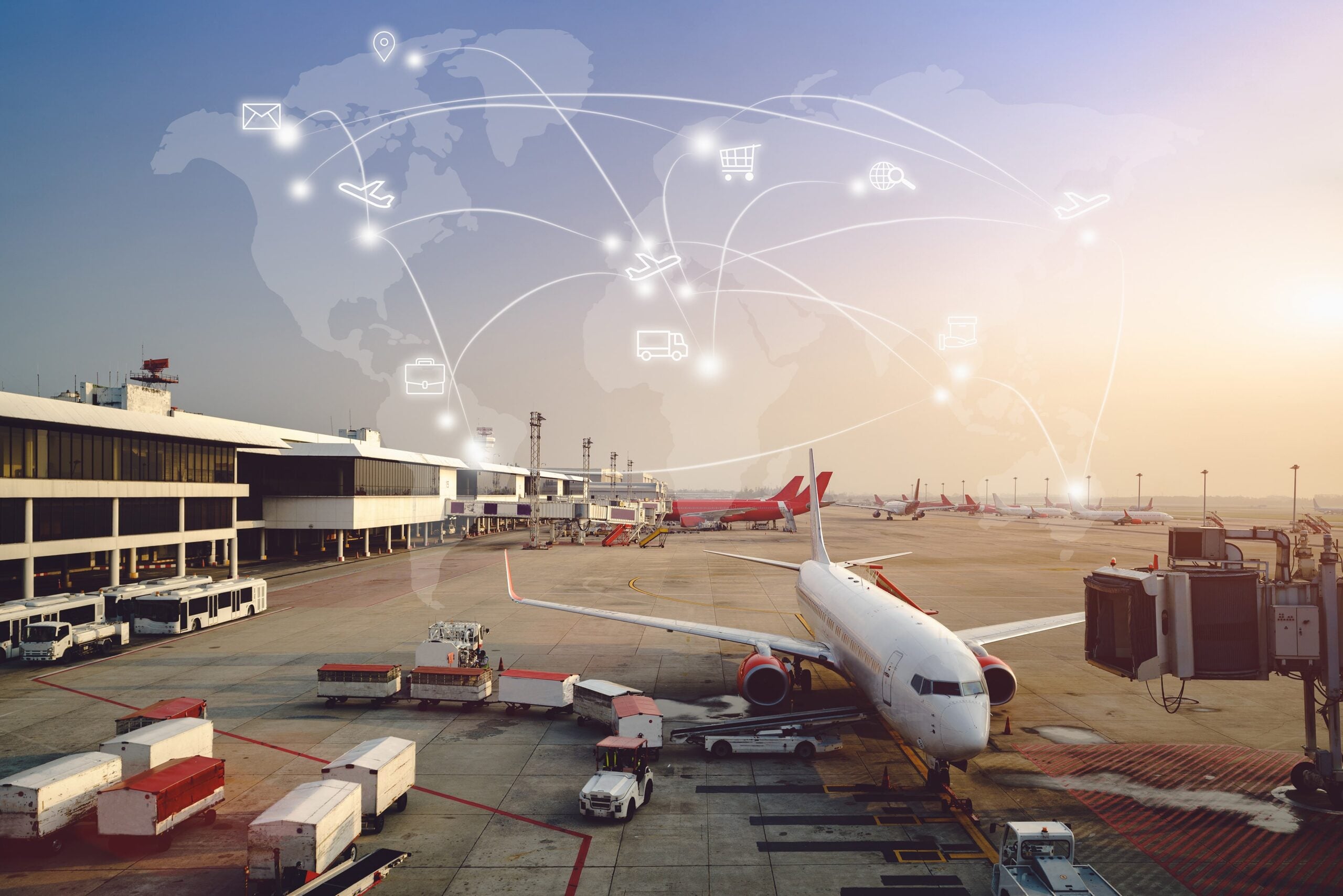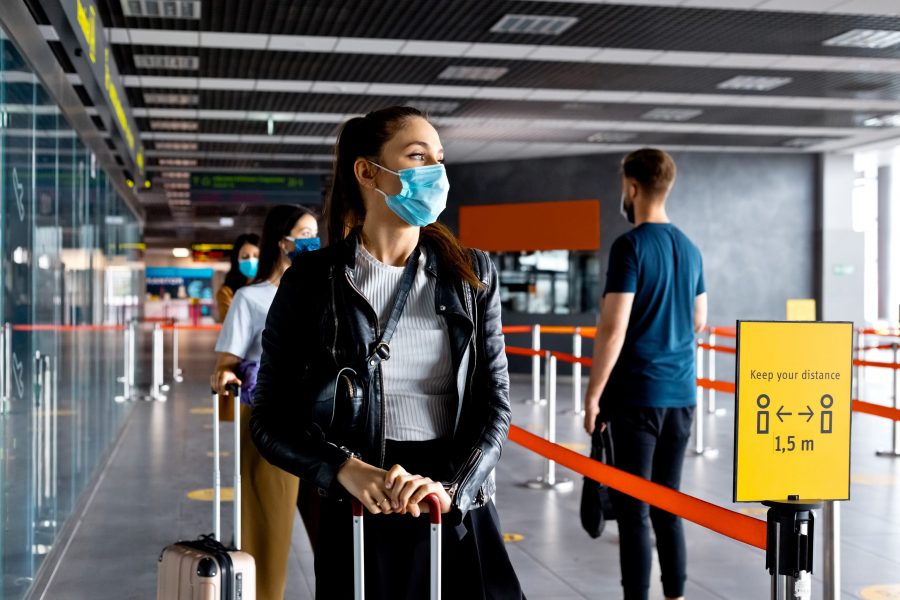
Slowly but surely the aviation industry has started opening its doors for passengers to take to the skies and experience a long-awaited holiday. One of the key players in allowing this re-start to take place are the many successful vaccine role out programmes which can be seen across the globe.
Alongside the successful vaccination schemes, technology introduced at airports focusing on low-touch, contactless elements have also allowed the industry to feel confident in providing a safe environment for staff and passengers.
However, although the industry has seen an increase in passenger numbers since it’s re-opening, several setbacks have presented themselves. Problems include long passenger lines for Covid-19 tests, the issue of fake vaccination documents, and concern surrounding the future of capacity and social distancing.
During the webinar roundtable, hosted by SITA titled ‘Runway to success’, SITA Europe president Sergio Colella discussed the issues which the industry is currently facing, and how technology can assist with them to provide a stress free, safe environment for everyone.
How well do you really know your competitors?
Access the most comprehensive Company Profiles on the market, powered by GlobalData. Save hours of research. Gain competitive edge.

Thank you!
Your download email will arrive shortly
Not ready to buy yet? Download a free sample
We are confident about the unique quality of our Company Profiles. However, we want you to make the most beneficial decision for your business, so we offer a free sample that you can download by submitting the below form
By GlobalDataTaking to the skies
European air travel is slowly picking up with airports seeing increasing passenger numbers and flight bookings. Data provided by SITA shows that on the 23 June airport traffic in European airports was at 53% of the numbers in 2019 with the passengers predominantly travelling from Southern Europe and Greece.
Over the last two weeks this has increased by 41% when compared to the previous two weeks with a 21% increase from Turkey, 26% Spain, 21% by France, 15% by Germany with only 5% from the UK – this is primarily due to the travel restrictions currently in place by UK government.
Colella commented: “Overall in Europe, we are really seeing a pickup which is being confirmed day after day. It is still only 50-53% of 2019 traffic but coming from a minus 80% or 20% of 2019 traffic only in a few months ago, so this data is quite encouraging.”
Increased passenger numbers: Increased challenges
Although the steady increasing passenger numbers are a positive for the industry this has also presented several challenges for those working in the sector. One of the most prominent – which has been stealing the front-page spotlight on several news websites and newspapers – is the issue of long passenger processing lines.
Research has shown that the average processing time has doubled from what it was pre Covid-19. These long waiting times – although airports are only processing half the number of passengers compared to in 2019 – have not only proven to be stressful for passengers but airports too.
Colella commented that the way forward from this current situation is via the inclusion of technology and digitalisation: “When we are back at 75% of the pre Covid-19 traffic waiting times could reach five hours, and when we get back to 100% of the pre Covid-19 traffic level they could take up to eight hours - of course this would not be acceptable.”

“We have solutions to manage that, and this solution is really around digitalisation, self-service, and automated the passenger processing before the passenger gets to the airport.”
The reaction to this new technology by the industry is increasingly positive, which can be seen in the recent Air Transport Insights survey published last February. Sent out to the leading 200 passenger carriers, the top 150 airports, executives, and company directors, the survey asked questions surrounding the future of technology and what airports are aiming to include over the next coming years.
Colella says: “We see clear indications that airlines are now prioritising to completely touchless checking process 84% of these airlines are planning or are already investing in automating the passenger processing. 89% of the airports are investing on automated passenger processing on biometric enablement and on self-service technologies. Another element is automated border control in order to cope with the new requirements and managing the social distancing, 71% of the airports aim to have these services available by 2023.”
Health documents
Alongside the challenge of lengthy queues, the industry is also faced with the challenge of health requirements. With the guidelines for health requirements ranging from a vaccination certificate, health passports and a negative Covid-19 test – knowing which documentation passengers need to present and in which format inevitably increases the wait times for passengers in lines.
During the webinar Colella stated that digitalisation will be a key step in making this process a simpler, more secure means of validating Covid-19 documentation; to ensure it is not only authentic, but to also provide staff and passengers with confidence. “Without digitalisation we will have long queues - who is going to read and validate the health pass at the airport? Who is validating the test paper documentation? Therefore, we have a solution - Health Protect.”
“This is an industry solution that bridges the gap between airlines and airport, governments, and allows them to communicate and integrate. There are more than 60 different pass schemes, so integrating them wherever the country where you fly in from is, and wherever is the country where you land is, is very important.”
Technology for the environment
As well as technology which will assist the industry moving forward to help the needs of passengers, the webinar also brought forward some other technology focused on reducing the industry’s environmental impact.
With the global aviation industry producing around 2% of all human made CO2 emissions the industry is also responsible for 12% of CO2 emissions from all transport sources – data provided by Air Transport Action Group – With figures such as this, the industry is striving towards a greener future.
During the webinar Colella discussed new technology which has seen SITA recently partner with Safety Line, a company dedicated in offering solutions to reduce fuel consumption in aviation.
Colella commented on this technology: “We have calculated that for a Boeing 777 we can get more than 200 tonnes of CO2 reduction a year per aircraft thanks to these very fine-tuning optimisations that allow the industry to reduce the carbon emission on a flight. Taking advantage of the big data, taking advantage of monitoring of the engines, and of the behaviour of the aircraft.”
With the increasing inclusion of technology at airports paired with the industry’s resilience in bouncing back from the impacts of the pandemic it is hoped that a pre Covid-19 airport environment can return very soon.
In his closing comments Colella said: “Our industry was one of the most hit by Covid-19, the industry has suffered a lot from the pandemic, but traffic is back. We really see a strong way of digitalisation in the industry. We see initiatives aiming at bringing airport operations to the next level, bringing sustainability to the next level and facilitating the passenger experience by making it connected to ensure sustainable mobility, and a seamless passenger journey.”






Related Company Profiles
SITA NV